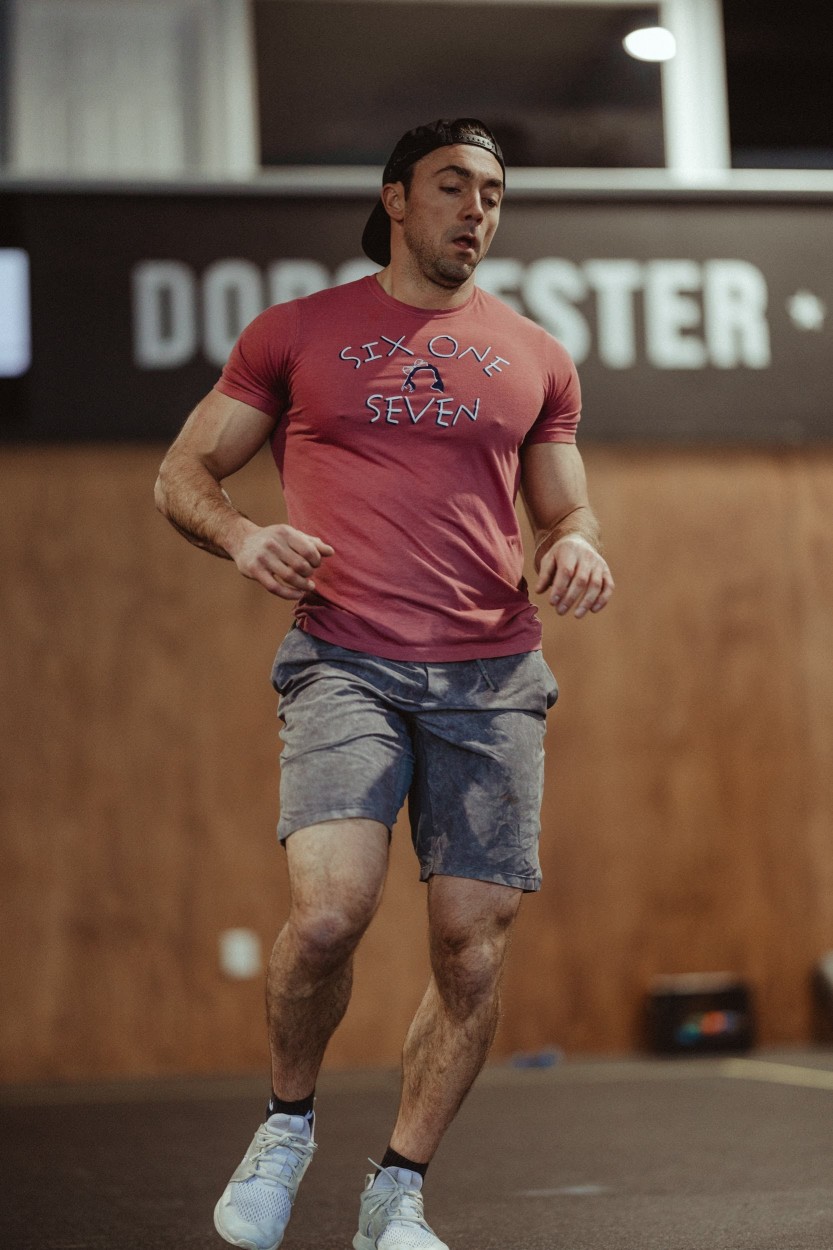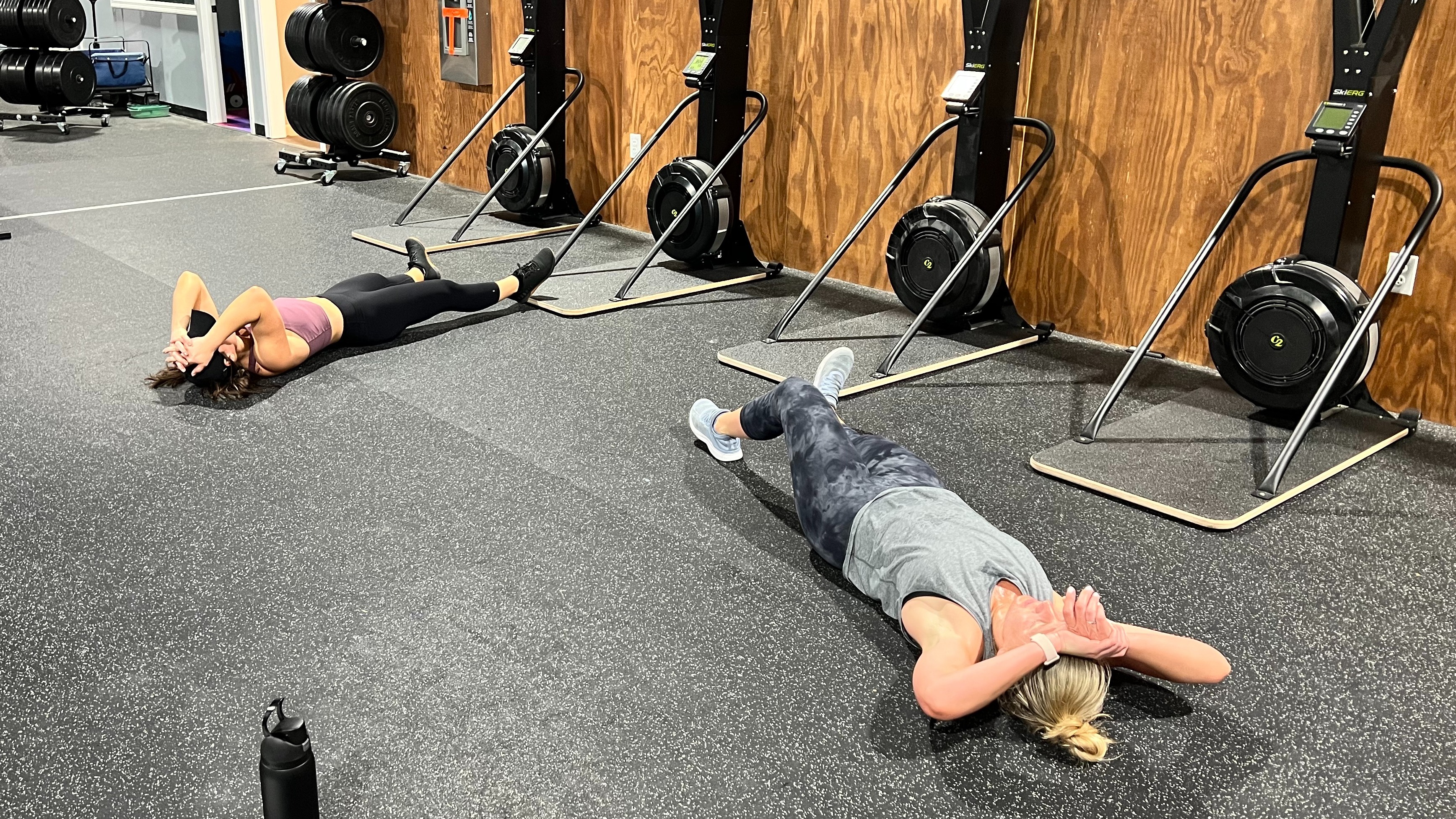
WHEN DO I TAKE A REST DAY?
Well, the simple answer is “ when your body tells you”. The more elaborate answer requires some groundwork.
First, lets understand and be comfortable with accepting a few things. Most importantly, the fact that MORE is not always better. Doing more often sounds sexier but doing better is really what separates the strong from the weak. This applies to all facets of training and recovery. If we are better with our training and better with our recovery, our progress is streamlined in the best possible way. Just doing more for the sake of doing it (i.e. seeing someone else do it) is often detrimental to our progress and can even expose us to injury. Next, lets breakdown what CrossFit actually is. In its most simplest form, it is a training methodology. Yes, CF617 , is a lot more than just that and the definition of CrossFit: "constantly varied , functional movements, performed at relatively high intensity", gives us a little more insight to its core values. The programming and methodology is founded on the theory that intensity + variation + focus = results (i+v+f=r). Focus relates to the technique/movement patterns and effort, variation refers to programming variations which allow the body train and challenge different body parts each day, and intensity refers to intention of training and how hard are you able to push yourself. This theory has been proven effective and successful over and over again by the everyday athlete to the fittest people on earth who follow this methodology. So with the formula above in mind, we can come to the conclusion that those who are better at bringing intensity and focus will ultimately continue to get fitter. Now, this is not to say that those who do not train with maximal intensity do not get fitter, however, there progress will be slower and at some point they will most likely plateau. Furthermore, they will never be able to reach their full potential!

INTENSITY AND FOCUS
Intensity and focus, like everything, are also relative. So your maximal intensity/focus and best effort may look different from the person next to you. Everyone has different strengths, weaknesses, movement patterns, injuries, desire, goals, commitment, drive, availability etc. and that’s ok! With all of our unique differences, you can guarantee that we are all at a different fitness level and, therefore, we all have a different tolerance for being comfortable with the uncomfortable too. Because of this, the one thing we should be focusing on is giving our best effort day in and out. Since there are so many variables that effect our daily lives, the quality of our "best" can and will change from day to day. We've all had those days that we just don't feel right and everything seems like more of struggle than it should. Even still, we fight through the day's workout and we give our "best". Yet, you catch yourself after saying something like, "Damn, I really want to do that again. I know I can do better." Instead, if you know you gave your absolute best, your "score" or outcome won't matter. Understanding how to bring the intensity and give your best effort also takes time and practice. This concept is something you learn and improve on over time. CrossFit, at its core, trains us to become comfortable with the uncomfortable. This is why we often see bodies strewn across the gym floor after a workout. Seasoned members learn how to push themselves just a little bit harder each day. Even if its 1% harder which then makes you 1% better than the day before. That 1% better adds up dramatically over time. So always do your best, every day, no matter what that looks like.

RESTING & SORENESS
The next thing to understand is how resting affects our body and how rest days are directly connected to the programming methodology of CrossFit. Intensity, workout stimulus and rest days are all required to get the max benefits from our program. Intensity and workout stimulus assure we hit certain muscle groups accordingly. When we workout, we are actively creating micro tears in our muscles so that the fibers grow back stronger and firmer. We’ve all probably experienced DOMS (delayed onset muscle soreness) after an intense day of training. Generally it hits around 24 hours after and peaks about 48 hours after the intense training session in question. DOMS is not to be confused with lactic acid buildup of the muscle which occurs during workouts. DOMS involves temporary inflammation around your overworked muscles which results in soreness. As time passes, blood flows to your muscles to help heal and repair your muscles. This is the process of your muscles GROWING BACK STRONGER! So if we ignore rest days and interrupt our bodies natural ability to repair itself, then we can never truly maximize our potential or benefit from the hard work you put in during that intense training session.

CAN WE SPEED UP THE RECOVERY PROCESS?
Well of course. However it takes a dedicated and sometimes extreme amount of time, commitment and resources to do so. Most of which the average person does not have readily available to them. This is why the most elite athletes are able to train harder, longer, and more consistently than us, hence leading to better performance and results. They spend as much, if not more, time recovering and healing their bodies as they do breaking it down. Specific nutrition regime, massage therapy, contrast water therapy, dry needling, and other restorative soft tissue treatments are just a few advanced ways of contributing to body maintenance and repair for elite athletes. We’ve all probably heard of active recovery days too. These can be extremely helpful to increase blood flow and allow the muscles to stretch actively. Ideally, this would be something like foam rolling, a light run, bike, or, even better, a light swim. Something that will get the blood flowing to the muscles in question that does not break down the muscles any further. An active rest day is NOT showing up to the gym and going 50-65% because you're extremely sore and your body feels beat to shit. This brings us back to the concept of intensity training and CrossFit. If we don’t rest, we can’t bring intensity. If we don’t bring intensity we don’t get results. Two 65% days don't equal the benefits and results from one 100% effort day. Rest days allow you to do just that and maximize your next few days in the gym. Because ideally, we want to be able to bring our best effort (intensity and focus) every time we workout. This doesn’t always mean Fran lung or curled up in a ball on the floor after a workout because the gym’s program tries to hit different stimuli for different days of the week. This is why hitting the days stimulus by modifying/scaling appropriately is so important.

PERSONAL EXPERIENCE AND APPROACH
I have been training in some capacity since I was 12 years old. Even with decades of experience, its only been over the last 5 years or so that I have really focused being mindful and dedicated to nutrition, recovery and, of course, resting. But, life changes. Your schedule and availability 3 years ago might be completely different than it is today. For myself, the week is extremely busy and I don't have much spare time to train outside of some specific windows. Knowing I take my job home with me during the week, I always reserve as much time as possible on the weekends for family time. This means I don't really train on the weekends. If there's one day I always hit and recommend attending is Monday, my favorite day of the week! Set the tone of your week by crushing your Monday workout. There’s no better feeling than knowing you started the week off on the right foot after destroying a tough workout with your peers. Look forward to knowing Mondays are very challenging workouts and if you can get through Monday’s workout, you’re ready for the rest of the week's challenges. After Monday, I'll try to hit Tues/Wed as often as I can. From there I will rest usually on Thursday and then hit Friday hard. I'd say I'm about 50/50 on Saturday morning workouts when the weather gets nicer. Saturdays usually consist of a long bike ride or some pump style movements (curls of course). In the past, Sunday’s were always my total body rest day/family day. But I've found myself sneaking in some mobility and pump sessions while the kids still nap. Sundays are also a day to get a nice reset from the week, catch up on any work needed, and get excited for a big Monday. I do enjoy a break from being at the gym in general. I love it so much that just one day away gets me fired up to get back in there the next. Every so often I will be very sore and beat up from Monday/Tuesdays work and I will just have to rest on Wednesday. As I get older, I've found that more rest has led to better performance which has led to better results, specifically in the strength department. This is something that just works for me and my schedule and I’ve seen solid results sticking to this regime. The programming for the gym takes into consideration that everyone is on different schedules along with the fact that we are open 7 days a week. So regardless of whether you are following a 3 on 1 off, 4 on 2 off, or maybe just getting in a few random days based on how you feel, you will be hitting some strength biased days, skill/conditioning days and bodybuilding components if you come just 3 days per week.
Overall, when deciding on which days you should rest, ask yourself a few questions:
- What is my schedule like, and when can I actually make it to the gym?
- How does my body feel today and can I give my best effort?
- When is the last time I took a rest day?
- What makes you happiest?
That last question is definitely the most important. Because whatever brings you the most joy is what you should be doing. If you want to come everyday to the gym because you love it so much, then F it, lets go! I’ll be the first to support you and push you off the cliff by telling you to send it on the first of three 800m runs. However, when you’re not seeing any progress and are dealing with the same nagging injuries, don’t get defensive when I say, I TOLD YOU SO!
STAY STRONG AND REST UP!
-Coach Pete
